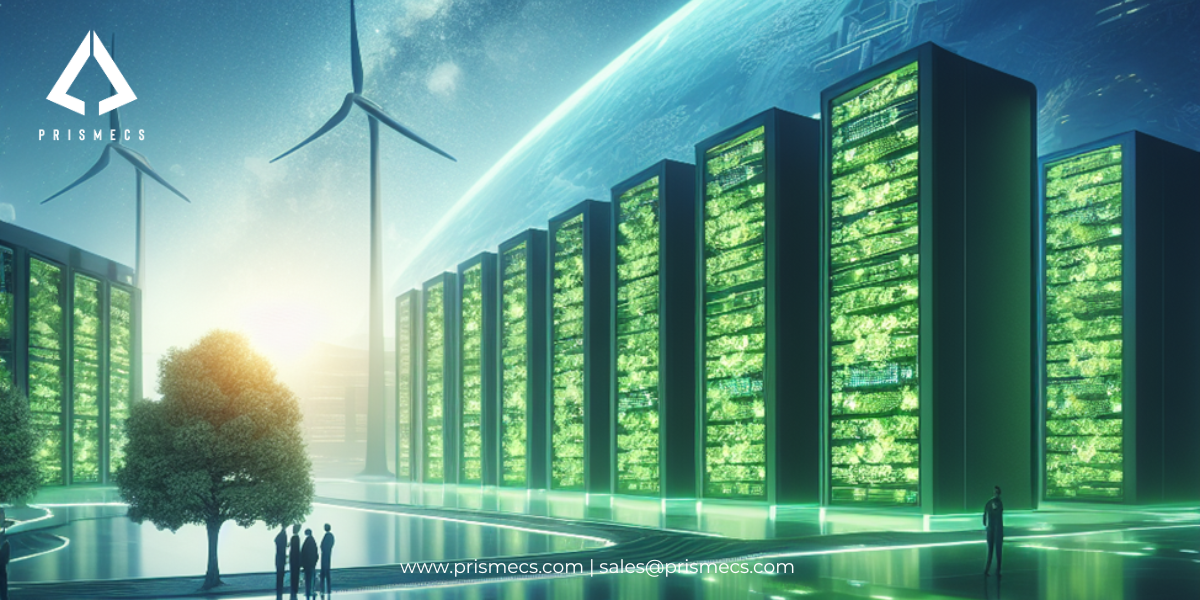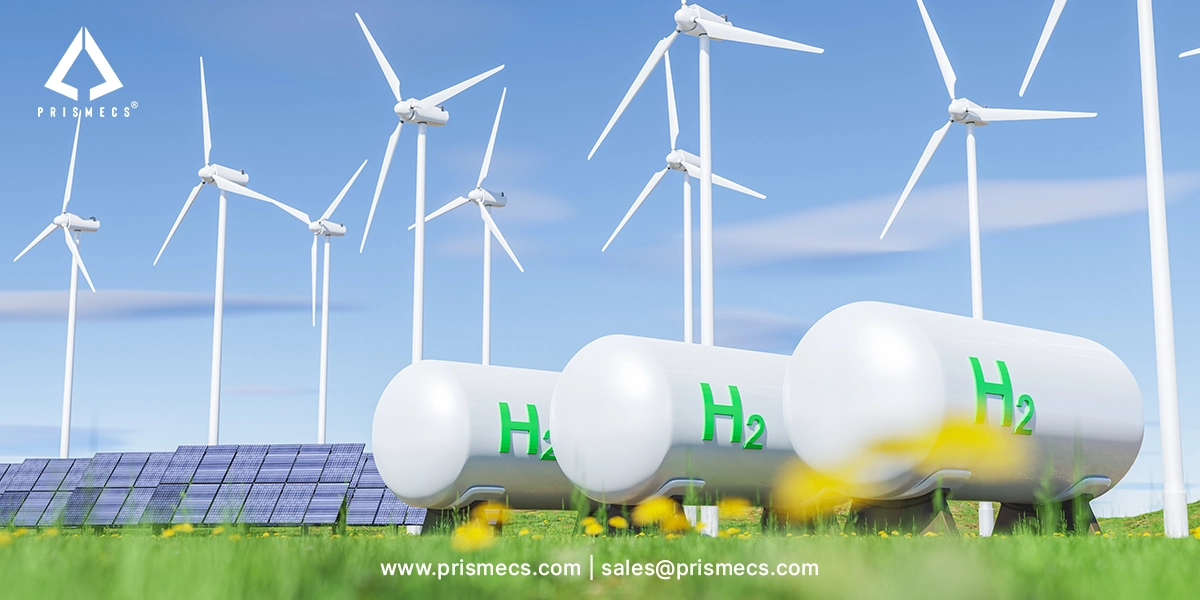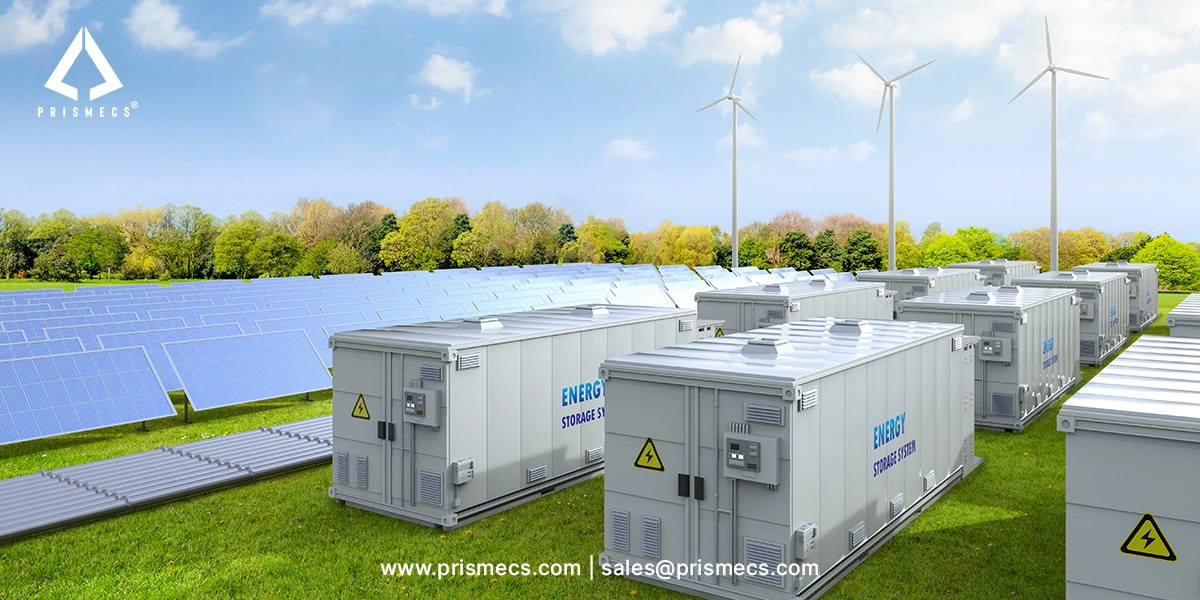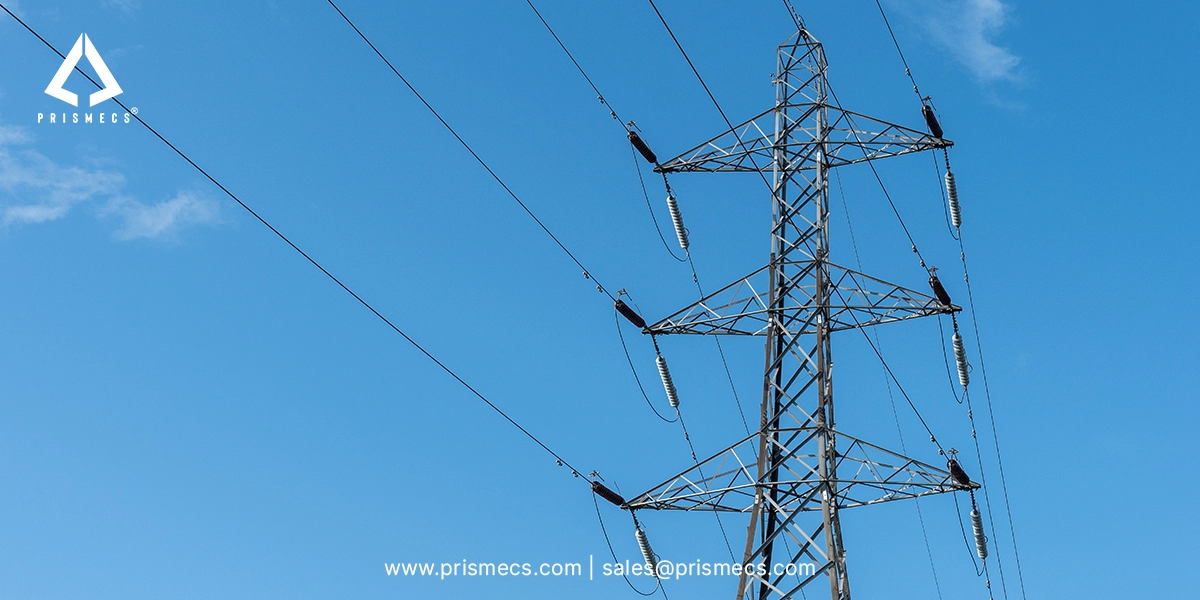
In the advanced technological landscape, data centers have become integral to nearly every industry. They support the essential infrastructure powering our digital world, encompassing cloud storage, streaming services, e-commerce, and financial transactions. Businesses are increasingly examining the environmental impact of traditional data centers. They rely heavily on digital resources and consume a significant amount of power. They also use raw materials throughout the supply chain. The rise of green data centers is transforming our approach to data storage and management. Green data centers provide cost savings and enhance overall efficiency.
What are Green Data Centers?
A green data center maximizes energy efficiency and minimizes environmental impact, emphasizing sustainability to reduce the carbon footprint associated with data processing and storage. Green data centers are facilities designed with a strong emphasis on sustainability and green building principles.
They maximize energy efficiency, minimize carbon emissions, and reduce overall environmental impact. These data centers utilize renewable energy sources, including solar panels and advanced cooling systems, to reduce their environmental impact. They include hot aisle containment and ecological design principles aligned with Green Grid and Energy Star standards. Green data centers help the environment by integrating these practices. They also save money through long-term operational cost savings.
Key Features of Green Data Centers
Green data centers utilize an efficient power supply and prioritize sustainability. They integrate renewable energy and environmental design (LEED) standards to reduce carbon footprints. These centers optimize energy use, improve cooling systems, and support eco-friendly operations. LEED certification ensures compliance with green building practices, making them environmentally responsible choices.
Utilization of Solar, Wind, or Hydroelectric Energy
Utilization of solar, wind, or hydroelectric energy helps reduce energy consumption and supports renewable energy and environment movement.
Low Power Usage Effectiveness (PUE)
Low Power Usage Effectiveness (PUE) improves data center efficiency and contributes to energy savings.
Optimized Carbon Usage Effectiveness (CUE)
Optimized Carbon Usage Effectiveness (CUE) reduces greenhouse gas emissions, contributing to a more sustainable data center.
Compliance with LEED
Compliance with LEED (Leadership in Energy and Environmental Design) standards ensures the construction of energy-saving facilities. These standards ensure that teams build facilities with energy-saving practices in mind.
Data Center Infrastructure Management (DCIM)
Integration with DCIM platforms enhances monitoring and resource optimization for data centers. These platforms include innovations such as evaporation pads and high-pressure spray systems. They improve cooling efficiency and further reduce energy usage.
The Environmental Impact of Traditional Data Centers
Traditional data centers are notorious for their massive energy consumption and substantial greenhouse gas emissions. The sheer volume of electricity powers servers and maintains optimal operating conditions. This reflects a significant amount of energy used inefficiently.
The Department of Energy reports that data centers consume about 2% of the total U.S. electricity. This accounts for a significant carbon footprint and aggravates global climate change concerns. It highlights the urgent need to reduce energy consumption. It also stresses the need to transition toward more sustainable data center models.
Read More About Data Center: Powering the Future of Data Centers
Global Market Size of Green Data Centers
The green data center market is valued at USD 85.08 billion in 2025. Analysts project that it will reach USD 93.66 billion by 2033. It exhibits a significant compound annual growth rate (CAGR) of 19.4% from 2024 to 2033.
Why Invest in Green Data Centers?
Designers create green data centers with sustainability at their core. They incorporate renewable energy sources, advanced cooling technologies, and innovative design principles to minimize environmental impact. Here's why your business should invest in green data centers now.
Reduced Power Consumption and Lower Operating Costs
Green data centers utilize advanced cooling technologies such as:
- Hot and cold aisle containment
- Liquid and air-based cooling systems
- Evaporation pads for energy-efficient cooling
- Free cooling using ambient air
These innovations significantly reduce the need for energy-hungry air conditioning units, improving PUE metrics and lowering operational costs.
Reduction in Power Consumption and Operating Costs
One of the primary benefits of green data centers is their ability to significantly reduce power consumption. Traditional data centers often rely on energy-intensive cooling systems to keep servers from overheating. In contrast, green data centers utilize cutting-edge cooling technologies for better energy efficiency. They include air cooling, hot and cold aisles, and waste heat recovery systems. These methods are not only more efficient but also more cost-effective in the long run. By improving energy efficiency, these facilities help reduce greenhouse gases, contributing to a cleaner environment.
Renewable Energy Integration
Green data centers often utilize renewable energy sources, including solar, wind, and hydroelectric power. By tapping into these sustainable resources, businesses can further reduce their carbon footprint and reliance on fossil fuels. This shift supports environmental goals, meets the demand for corporate responsibility, and contributes to lowering greenhouse gases.
Green facilities often power their operations with renewable energy sources, including solar and wind. They reduce their reliance on fossil fuels by using these clean energy alternatives. This not only minimizes the environmental footprint but also aligns with corporate sustainability goals and the principles of environmental design, as well as LEED certification.
Improving Carbon Usage Effectiveness (CUE) and Reducing Carbon Emissions
Carbon Usage Effectiveness (CUE) is another crucial metric for evaluating the environmental impact of data centers. It measures the total CO2 emissions produced per unit of energy consumed by IT equipment. Join the movement toward green data centers, where we prioritize achieving low CUE values. We achieve this through energy optimization and the implementation of carbon-neutral or carbon-negative technologies.
Achieving Leadership in Energy and Environmental Design (LEED) Certification
Green data centers meet environmental standards, such as LEED certification. LEED recognizes high energy efficiency. It also recognizes water conservation and indoor environmental quality. Achieving LEED certification can provide a competitive edge for businesses. It signals to customers, partners, and investors that the company supports sustainable practices. It shows the company is taking tangible steps to reduce its environmental impact.
Enhanced Cooling Systems and Technologies
Adequate cooling is essential for data center operations, and traditional cooling systems are typically energy-intensive and inefficient. Green data centers employ innovative cooling technologies to address this challenge. For example, many utilize free cooling to reduce the need for artificial cooling. They take advantage of naturally cool ambient air to achieve this. Liquid cooling and geothermal cooling are advanced methods that improve energy efficiency. These methods also enhance the reliability and lifespan of data center equipment.
Minimizing Waste and Maximizing Efficiency
Green data centers prioritize waste reduction and resource efficiency. This includes recycling electronic waste, using sustainable building materials, and optimizing data storage practices to reduce physical space requirements. By minimizing waste and maximizing resource efficiency, green data centers contribute to a circular economy and promote sustainable business practices.
LEED Certification and Sustainable Environmental Design
Achieving LEED certification affirms a data center’s commitment to environmental excellence. LEED standards ensure high performance in:
- Energy and water efficiency
- Sustainable building materials
- Indoor environmental quality
Read More About Data Center: Discover Leading Data Center Solutions for Scalability
Conclusive Remarks
The shift toward green data centers is not just a trend; it is a necessary step. It is an essential evolution in response to growing environmental concerns. The demand for sustainable business practices is growing. By investing in green data centers, businesses can reduce their power consumption and operating costs. They can utilize renewable energy sources for power operations. They can also effectively minimize their carbon emissions.
Partner with Prismecs for Investment in Green Data Centers
Our expertise in designing and managing green data centers ensures optimal performance and efficiency. We also show a commitment to reducing environmental impact through our green data center practices. By choosing Prismecs, you align your business with industry-leading practices that prioritize efficiency, scalability, and sustainability. As data demands continue to rise, our expertise ensures that data centers remain both high-performing and environmentally responsible.
Invest with us today to secure an eco-friendly data infrastructure for your business growth. This infrastructure supports your development and contributes to a sustainable future. To avail of our green data center services, call us at +1 (888) 774-7632 or email us at sales@prismecs.com.
Tags: Green Data Centers Sustainable Tech Eco Friendly IT Energy Efficient Data Centers Renewable Energy Carbon Neutral Data Centers
recent posts

Green Hydrogen
6 minutes read
Green Hydrogen Plant Technology Guide
Discover how a green hydrogen plant works, its key technologies, and its role in clean energy. Explore solutions for scalable, carbon-free hydrogen pr...

EPC Services
7 minutes read
EPC Power: From Design to Delivery of Reliable Energy System
Discover how EPC power solutions streamline design to delivery, ensuring reliable, efficient, and future-ready energy systems in one integrated proces...

Data Centers
12 minutes read
Powered Shell Data Centers | Benefits, Design & Adoption
Discover the benefits, design, and adoption of powered shell data centers. Learn how they boost speed to market, scalability, and energy efficiency.

Distributed Energy Services
9 minutes read
Smart Grid and Distributed Energy Resources
Discover how smart grids and distributed energy resources (DER) work together to create efficient, resilient, and sustainable energy systems for the f...